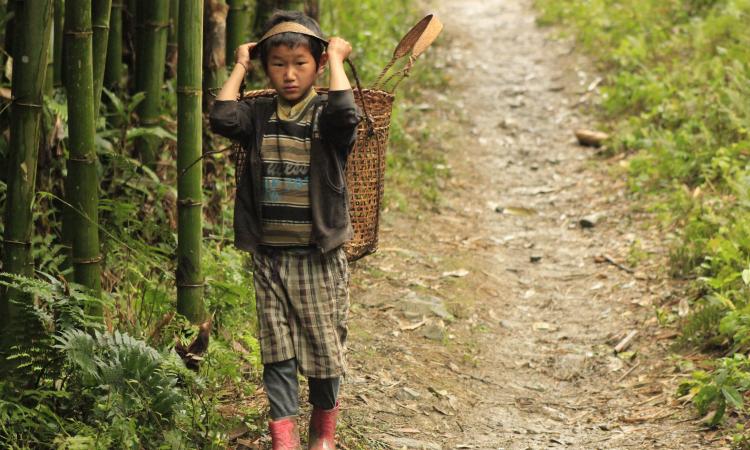
If you try to map where indigenous people live and where abundant biodiversity exists, you will notice a big overlap. It might seem like coincidence, but it isn't. Indigenous people have long shared and declared a strong connection to their traditional landscapes. They have had methods to protect, preserve and live harmoniously with nature. Despite that, they remain a large excluded group - about 370 million around the world, much higher than the population of the entire United States (311 million people in 2011).
Indigenous people, also called adivasis in India or tribals everywhere else, very often live in naturally rich but economically poor areas. The Northeast region of India has over 160 indigenous communities with distinct cultural identities and strong ties with their land. Because of this connection and the knowledge they have acquired over generations through stories and myths, they understand the complexities of nature and its resilience.
“As traditional guardians to the ecosystem around them, they strongly believe that self-determination is sacred and is grounded in a collective and community paradigm and not on the individualistic pursuit of maximum economic production. They strongly declare and desire to live under their own worldview on their own lands and under their own faith”, says Dr. Phrang Roy, Chairman of the Northeast Slow Food and Agrobiodiversity Society (India) and Coordinator, Indigenous Partnership for Agrobiodiversity & Food Sovereignty (Italy) during a conference on ‘Addressing poverty and vulnerability in the Hindu Kush Himalayas, organized by International Centre for Integrated Mountain Development.
Indigenous communities have a strong belief in the sacredness of the natural world and assert that excess exploitation of the material world through huge infrastructure programs like large dams and hydropower projects would not lead to social development. They are concerned that these infrastructure programmes might compromise their autonomy over their lands that are under threat as those with economic growth interest buy and search for more sources of energy, minerals and water.
Though the Sixth Schedule in certain areas of Northeast India recognizes the rights of indigenous communities over land and self-governance, these communities continue to feel discriminated and marginalised. This begs the question 'should the ways of poverty alleviation be different for these communities"?
“Arunachal Pradesh, a major biodiversity hotspot with unmatched natural resources is seen as a potential powerhouse of the country with about 50000 MW hydropower capacity. It is a purely tribal state but even today the state does not have a comprehensive land policy. The state government says that every inch of land belongs to the communities. Despite that, the state has signed away around 160 hydropower projects to corporate bodies, public sector units and private developers. There is a contradiction or dichotomy in the approach as far as the infrastructure interventions are happening in the mountains especially in the context of Arunachal Pradesh”, asserts Jarjum Ete, President, All India Union of Forest Working People and President, Indigenous Women’s Resource Centre, Northeast India.
There is a sharp contrast of their holistic worldview to the modern approach of homogenization and limitless growth. “It’s a challenge to understand these aspirations but if we do, there are enormous opportunities for a development that is more humane and sustainable with indigenous people as co-creators”, adds Dr. Roy.
The video below shows how ‘development with identity’ is the ideal way to respect these indigenous communities and their ability to sustain a functioning ecosystem.
(This video was made by Usha Dewani as a part of the ICIMOD Media Fellowship 2013)
Lead image source: Raju Mimi
/articles/identity-theft-northeast-india